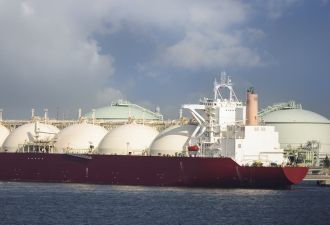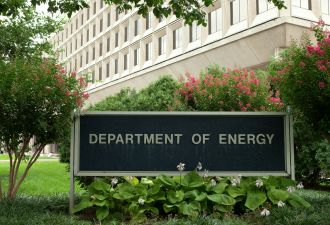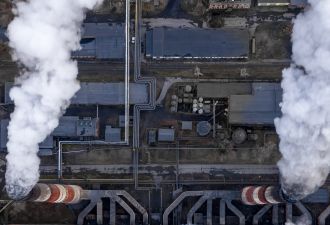The European Union is planning a 15-gigawatt renewable energy tender and auctions for green hydrogen projects as part of a trillion-dollar Green Deal package, according to draft proposals leaked this week.
First revealed in December 2019, the EU's Green Deal was initially structured as a roadmap for the bloc to achieve its goal of net-zero status by 2050. But early progress has been hampered since the Green Deal was revealed by European Commission President Ursula von der Leyen. The coronavirus outbreak and a failure to agree on the EU's next seven-year spending framework have created division among some member states that are nervous about the economic fallout of COVID-19.
Next week, the reworked — and renamed — Green Deal Recovery package will be presented in full, with a string of near-term policies added to act as an economic stimulus. It will be an early indicator of policymakers’ willingness to act on promises of a "green recovery."
A draft document obtained by Bloomberg and Euractiv lays out a series of planned policies. With the EU budget still unresolved, many of the finer details and financial figures appear in square brackets, denoting that they have not yet been settled. But with less than a week before the Green Deal's planned release, the shape of the policies laid out are less likely to change, even if budgets do.
Any plan will need the backing of the European Parliament and the European Council, made up of its 27 member states.
Scaling up support for green hydrogen
The scale and breadth of support for green hydrogen are particularly striking. While there is more support for R&D, the Green Deal Recovery package would move far beyond that, offering stable revenue for those using hydrogen created with renewable power — known as green hydrogen.
The EU package contemplates the adoption of a contract for difference (CFD) system for carbon for green hydrogen projects, effectively acting as a hedge against carbon prices. Such a system would see green hydrogen users bid the level at which they can offset a ton of carbon with their project and still make a return. If the carbon price moves above that strike price, they would pay back the difference. If the carbon price fell below that level, the EU would make up the shortfall, just like a renewable CFD system based on power prices.
This would give investors stability and allow them to leapfrog the current phase of lower CO2 prices. Research by Standard & Poor's suggests Europe's carbon prices, currently around €21 per ton, could rise sevenfold by 2030.
Lisa Fischer, senior policy adviser with the think tank E3G, welcomed the development of the carbon CFD approach and efforts to target existing industry. “Industry is the right sector to focus on in terms of hydrogen,” Fischer said in an interview.
“It’s expensive if you want to produce it sustainably, and the volume we can produce is limited. There are quick wins to be had by focusing on those already using gray hydrogen. Much of the infrastructure will already be in place so that’s the sweet spot for a starting place,” Fischer said, adding that tax regimes would also need to support green hydrogen and avoid the chance of double taxation on the hydrogen and the electricity used to produce it.
Gray hydrogen, produced from natural gas, is used widely in refineries and chemical plants. Focusing first on converting that gray hydrogen to green creates an immediate demand — and immediate emissions reductions.
Green hydrogen is already attracting attention in markets with access to large volumes of cheap renewable power. BP is exploring the feasibility of producing hydrogen and ammonia at a wind- and solar-powered facility in Australia. A cluster of projects on the coastlines of the North Sea, and its offshore wind concessions, has brought interest from Ørsted, Equinor and Shell.
Shell, which has previously called for support for hydrogen, would not comment on the draft when contacted by GTM.
The draft Green Deal Recovery package also mentions efforts to reduce electrolyzer costs. While Fischer acknowledges that this is essential, she said they account for a small portion of the cost of green hydrogen. Electricity is up to 80 percent, so even when looking at reducing the cost of what has been identified as an essential energy carrier, the argument swings back around to renewables.
Huge wind and solar stimulus
The EU is also considering a bloc-wide tender for 15 gigawatts of new renewables over the course of two years, although details remain scarce. Such a tender would support wind and solar at a time when deployment is struggling in many parts of Europe amid low wholesale power prices, as the International Energy Agency pointed out this week.
But Fischer warned that there's a risk that the tender would benefit nations with the most favorable financing conditions, leaving behind countries most in need of economic stimulus.
“We need to think about who this tender is going to benefit. Is it all going to go to North Sea offshore wind? How can you make sure that it's balanced in terms of the job creation and the manufacturing supply chain,” she said.
What’s else is included in the draft
An array of measures have been set out in the draft covering grid, generation and efficiency. Here’s an (inexhaustive) list of the proposals as they stand:
- €25 billion in grants and €65 billion of loan guarantees for building renovations including rooftop solar PV, insulation and more efficient, or renewable, heating and cooling.
- €20 billion in grants and loan guarantees to support EV purchasing.
- €10 billion of European Investment Bank co-financing to match national governments' funding on a 1:1 ratio for national renewables tenders.
- €10 billion of EIB loans for network infrastructure projects that support the rollout of green hydrogen and/or renewable power.




